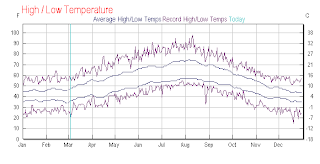1. What are resources?
Resources is the collective wealth of a country's natural minerals
2. Define renewable and non-renewable resources?
Renewable resources are resources that can be recycled and used effectively again and again. Non-renewable resources are resources that can't be effectively recycled and reused.
3. Explain how a renewable resource can become non‑renewable?
Renewable resources can become non-renewable resources through over exploitation
4. Why is soil a valuable resource?
Because it is the base of all life and agriculture.
5. What is silviculture?
The cultivation of forest trees
6. What is the area of forest in Australia?
The area of forest is known as fauna
7. How valuable are Australia’s fishing and aquaculture industries?
Extremely valuable, they provide thousands of jobs and contribute billions of dollars towards Australia economy. Not to mention it feeds half the nation and keeps them healthy with all the valuable nutrients they obtain from eating seafood.
8. Describe one measure put in place to protect a fish species?
The Australian Fishing management authority's put fishing limitations or bans on endangered or over fished fish species.
9. Which minerals does Australia have the largest reserves of in the world?
Australia largest known economic resources of bauxite, iron ore, lead, zinc, silver, uranium, industrial diamonds and mineral sands.
10. Why are Australia’s mineral reserves increasing?
Because of the better and more efficient mining technologies frequently coming out
11. Refer to 1.54 to write a paragraph describing Australia’s forest resources?
Over 1/5 of the total land area in Australia is covered in forests. Australia's economy makes over 2 billion dollars in profit each year from tree forestation and Australia imports more than they export buying up to 4 billion dollars worth of timber.
12. Explain why uranium is a valuable resource.
Because it is such a rare resource and creates huge reserves of energy that can be harnessed, also because it can be made into such a cataclysmic weapon.
13. Explain why World Heritage sites are valuable resources.
Because they teach us so much about our past, and we can learn so much from them. They are also becoming increasingly more valuable as more and more are cut down
14. How do you think uranium mining impacts on the landscape?
I think it is affecting the landscape in a very negative way. We are tearing up the land and destroying the local fauna and flora that inhabit the area. We are also destroying the Aboriginals native land that they so tenderly cared for over 40,000 years.
15. Describe the location of the Australian fishing grounds shown in 1.55?
Australia's fishing grounds include an area much bigger area than Australia itself.

16. Refer to 1.59:
a. Describe the spatial distribution of Australia’s uranium reserves.
There is quite a few potential mines throughout Australia each of them hundreds of Kilometers apart
b. Name the former uranium mine located in South Australia.
The former uranium mine the was situated in South Australia is called Radium Hill
c. Name the uranium mine in the Northern Territory.

The uranium mine currently active in the Northern Territory is called Ranger.
17. Construct a suitable type of graph to represent the statistics in 1.61. Describe the world distribution of uranium resources shown in the graph.
18. Refer to 1.60:
a What was the value of Australlia’s uranium exports in:
i 1986: was valued at 300 million dollars
ii 1996: was valued at 250 million dollars
iii 2006: was valued at 550 million dollars
b What was the average value of uranium exports from 1997 to 2006?
The average export value of Australia's uranium from 1997 to 20066 was 390 million dollars
c Describe the trend in the value of uranium exports
Ever since 1997 Uranium export profits have been consistently rising.





















